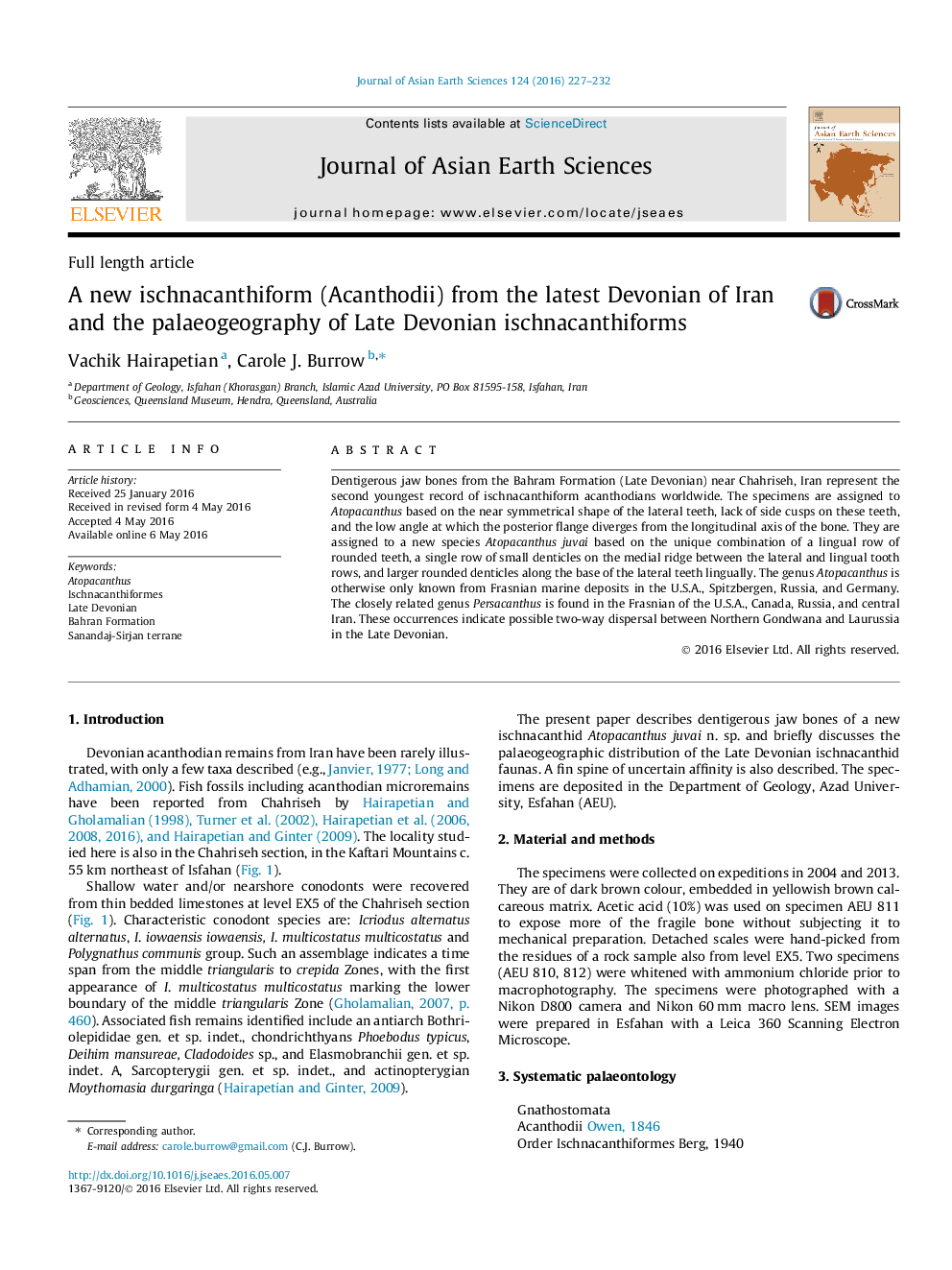| کد مقاله | کد نشریه | سال انتشار | مقاله انگلیسی | نسخه تمام متن |
|---|---|---|---|---|
| 4729989 | 1640347 | 2016 | 6 صفحه PDF | دانلود رایگان |

• Atopacanthus juvai n. sp. is the second youngest ischnacanthiform.
• Late Devonian ischnacanthiforms are distributed around northern Gondwana and Laurussia.
• The distribution suggests a 2-way faunal exchange between Laurussia and Northern Gondwana.
Dentigerous jaw bones from the Bahram Formation (Late Devonian) near Chahriseh, Iran represent the second youngest record of ischnacanthiform acanthodians worldwide. The specimens are assigned to Atopacanthus based on the near symmetrical shape of the lateral teeth, lack of side cusps on these teeth, and the low angle at which the posterior flange diverges from the longitudinal axis of the bone. They are assigned to a new species Atopacanthus juvai based on the unique combination of a lingual row of rounded teeth, a single row of small denticles on the medial ridge between the lateral and lingual tooth rows, and larger rounded denticles along the base of the lateral teeth lingually. The genus Atopacanthus is otherwise only known from Frasnian marine deposits in the U.S.A., Spitzbergen, Russia, and Germany. The closely related genus Persacanthus is found in the Frasnian of the U.S.A., Canada, Russia, and central Iran. These occurrences indicate possible two-way dispersal between Northern Gondwana and Laurussia in the Late Devonian.
Journal: Journal of Asian Earth Sciences - Volume 124, 1 July 2016, Pages 227–232